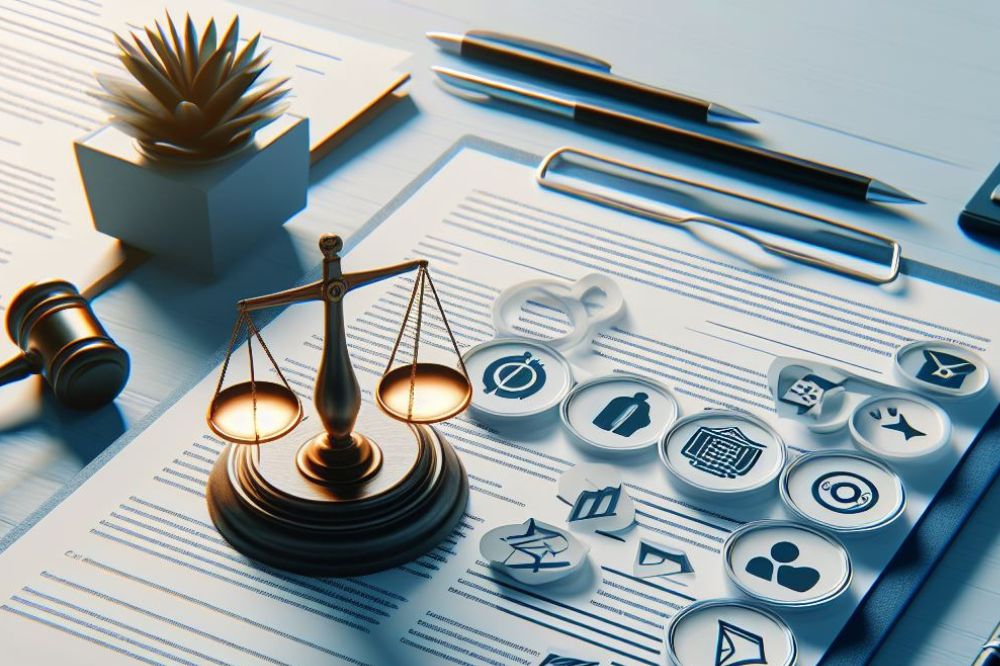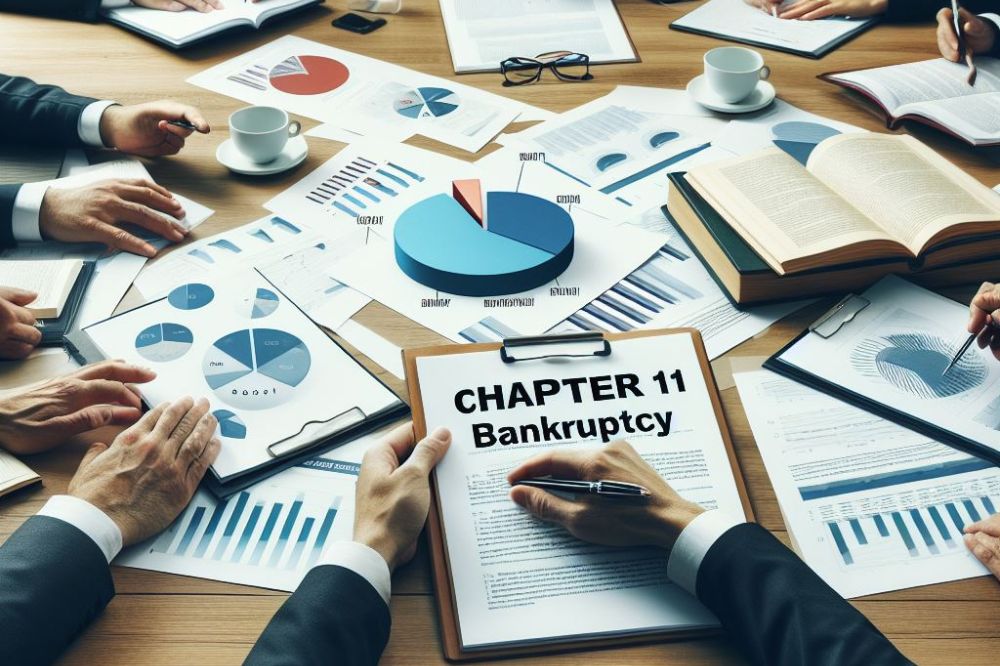Business bankruptcy vs. personal bankruptcy – two paths with distinct implications and outcomes. While business bankruptcy shields personal assets from liabilities, personal bankruptcy intertwines personal and business debts. The contrasting impact on credit scores is stark – business bankruptcy primarily affects the company’s creditworthiness, while personal bankruptcy can significantly damage an individual’s credit standing. Understanding these differences is crucial for entrepreneurs, business owners, and individuals navigating financial challenges, guiding them towards the most suitable solution for their circumstances.
Key Takeaways
- Know the Difference: Understand the distinction between business bankruptcy and personal bankruptcy to make informed financial decisions.
- Seek Professional Guidance: When facing bankruptcy, consult with legal and financial experts to navigate the process effectively.
- Evaluate Financial Impact: Consider the financial implications of both types of bankruptcy on your assets, liabilities, and future financial stability.
- Legal Compliance is Key: Be aware of the legal considerations involved in bankruptcy proceedings to ensure compliance with regulations and protect your rights.
- Plan for Recovery: Develop a strategic recovery process post-bankruptcy by creating a realistic financial plan and rebuilding credit gradually.
- Learn from Case Studies: Gain insights from real-life case studies to understand how businesses and individuals have successfully managed bankruptcy situations.
Understanding Bankruptcy
Basics Explained
Bankruptcy, whether business, corporation, or personal, involves a legal process where individuals, family, or entities declare inability to repay debts. Business bankruptcy pertains to companies unable to meet financial obligations, while personal bankruptcy relates to individuals facing the same predicament. The key distinction lies in who bears the debt responsibility for business debts.
Individuals opt for personal bankruptcy due to overwhelming debts, loss of income, or unexpected medical expenses. Conversely, businesses file for bankruptcy when faced with insurmountable debts, declining revenue, or operational challenges.
Types Available
For businesses, common types of bankruptcy include Chapter 7 (liquidation), Chapter 11 (reorganization), and Chapter 13 (debt adjustment). On the other hand, individual bankruptcy options mainly consist of Chapter 7 (liquidation) and Chapter 13 (repayment plan).
Comparing the two, business bankruptcies often aim at reorganizing operations to continue functioning, while personal bankruptcies focus on liquidating assets or establishing repayment plans.
Legal Processes
When filing for business bankruptcy, companies undergo legal procedures such as submitting financial records, attending court hearings, and proposing a reorganization plan. The court oversees these proceedings to ensure fair treatment of creditors and adherence to bankruptcy laws.
On the contrary, personal bankruptcy entails steps like credit counseling, submitting financial information, attending a meeting of creditors, completing a debtor education course, and following through on the repayment plan if applicable. The court plays a pivotal role in overseeing this process to protect both debtors’ rights and creditors’ interests.
Business Bankruptcy
Chapter 7 Liquidation
Chapter 7 bankruptcy, also known as liquidation bankruptcy, involves selling a debtor’s non-exempt assets to pay off creditors. Individuals filing for Chapter 7 must pass a means test in bankruptcy court to qualify based on income, expenses, and business debts. The process typically takes about three to six months, providing a fresh start financially.
Under Chapter 13 bankruptcy, individuals create a repayment plan spanning three to five years to settle debts. This plan allows debtors to retain their assets while gradually repaying creditors. It offers a structured approach to managing debts and avoiding foreclosure on properties.
Opting for a Chapter 13 repayment plan provides individuals with the opportunity to restructure their debts in a manageable way. This type of bankruptcy enables debtors to retain their assets and work towards financial stability through consistent repayments. It offers a more organized and less disruptive path towards resolving financial obligations.
Chapter 11 Reorganization
Chapter 11 bankruptcy allows businesses to reorganize their debts and operations under court supervision while maintaining control of day-to-day operations. Unlike individuals, businesses can continue operating during the restructuring process under Chapter 11. This form of bankruptcy provides companies with the chance to restructure and emerge stronger financially.
For individuals, Chapter 11 reorganization is complex and costly compared to other bankruptcy options available. It requires detailed financial reporting and adherence to stringent court requirements throughout the process. Navigating through Chapter 11 as an individual can be challenging due to its intricate nature and legal complexities involved.
Filing for Chapter 11 bankruptcy offers businesses the advantage of protecting valuable assets from immediate seizure by creditors while developing a feasible repayment plan over time. However, it poses challenges such as high legal costs, time-consuming procedures, and potential loss of control over business decisions during restructuring. Businesses must weigh these factors carefully before opting for this form of bankruptcy protection.
Eligibility Criteria
Businesses seeking bankruptcy protection must meet specific criteria such as being unable to pay debts when they are due or facing imminent foreclosure or repossession of assets. Individual eligibility for bankruptcy protection is determined by factors like income levels, debt amounts, and previous bankruptcies filed within certain timeframes.
To qualify for bankruptcy protection, individuals must undergo credit counseling within six months before filing for bankruptcy and complete a debtor education course after filing but before debts are discharged by the court.
Specific conditions that may impact eligibility include recent transfers of property or funds, previous dismissals of bankruptcy cases without court approval, or failure to adhere to court orders during previous bankruptcies.

Impact on Operations
Business bankruptcy can disrupt daily operations by affecting employee morale, customer confidence, and supplier relationships due to uncertainties about the company’s future viability.
Personal bankruptcy can hinder an individual’s ability to secure loans, rent properties, or obtain credit cards in the future due to the negative impact on credit scores resulting from the filing.
Mitigating operational impacts of bankruptcy involves effective communication with stakeholders, implementing cost-cutting measures where possible, and seeking professional guidance on financial restructuring strategies.
Personal Bankruptcy
Chapter 7 Liquidation
Chapter 7 bankruptcy, also known as liquidation bankruptcy, involves selling a debtor’s nonexempt assets to repay creditors. This process typically lasts three to six months, providing individuals with a fresh financial start.
Chapter 13 Repayment Plan
To qualify for Chapter 13 bankruptcy, individuals must have a reliable income source to create a repayment plan. Debtors must have unsecured debts below $419,275 and secured debts under $1,257,850. Exceptions may apply based on specific circumstances.
Qualifying Conditions
Personal bankruptcy can significantly impact an individual’s financial stability by discharging most debts. Filing for bankruptcy can stay on one’s credit report for up to ten years, affecting future loan approvals.
Managing personal finances post-bankruptcy requires careful budgeting and rebuilding credit through responsible borrowing habits. Seeking financial counseling can help individuals navigate the complexities of post-bankruptcy finances.
Effects on Personal Finances
In business bankruptcy, the entity is liable for its debts separately from the owner’s personal obligations. Individuals in personal bankruptcy are personally responsible for their debts, potentially leading to asset liquidation.
Liability in business bankruptcy is determined by the type of business structure, while personal bankruptcy holds individuals accountable for all debts incurred. Understanding these liability differences is crucial in navigating the legal aspects of bankruptcy proceedings.
Key Differences Highlighted
Liability Differences
During business bankruptcy, strategies for managing assets are crucial to maximize returns for creditors. Companies often sell off assets to repay debts. On the other hand, individuals facing personal bankruptcy can protect certain assets like a primary residence or retirement accounts within specified limits. Proper asset management is key in both scenarios to safeguard essential possessions and financial stability.
Asset Management
In business bankruptcy, debt discharge rules vary based on the type of bankruptcy filed. Chapter 7 liquidation involves selling off assets to pay creditors, while Chapter 11 allows businesses to reorganize and continue operations. In personal bankruptcy cases, criteria for debt discharge depend on the chapter filed – Chapter 7 or Chapter 13. Exceptions exist in both types of bankruptcies, such as certain debts that cannot be discharged.
Debt Discharge Rules
When filing for business bankruptcy, companies must follow specific steps and submit necessary paperwork to initiate proceedings. The process involves declaring all assets and liabilities accurately to determine the best course of action for debt repayment. Similarly, individuals seeking personal bankruptcy protection must adhere to filing procedures that include disclosing financial information and attending credit counseling sessions. Accuracy and completeness in filing are crucial to avoid delays or complications in the bankruptcy process.
Filing Procedures
Business bankruptcy can significantly impact a company’s credit score, making it challenging to secure loans or credit lines in the future. Personal bankruptcy also has lasting effects on an individual’s credit rating, leading to higher interest rates and limited borrowing options. To rebuild credit after bankruptcy, individuals can start by establishing a budget, making timely payments, and applying for secured credit cards. Gradually, with responsible financial habits, credit scores can improve over time.
Financial Implications
Credit Score Effects
Protecting assets during business bankruptcy is crucial. Strategies include transferring assets to a spouse, investing in exempt assets, and utilizing retirement accounts.
Individuals facing personal bankruptcy can safeguard assets by using exemptions allowed by law. Asset protection techniques involve homestead exemptions, retirement accounts, and insurance policies.
Safeguarding assets before and during bankruptcy proceedings is essential. Legal ways to protect assets include setting up trusts, transferring ownership, and utilizing exemptions provided by law.
Asset Protection Strategies
Business bankruptcy can have lasting effects on future operations. Companies may face challenges in securing loans, attracting investors, and rebuilding credit post-bankruptcy.
Personal bankruptcy can significantly impact an individual’s financial health. It may affect credit scores, ability to secure loans, and eligibility for certain financial opportunities in the future.
Mitigating the long-term consequences of bankruptcy involves rebuilding credit through timely payments, budgeting effectively, and seeking financial counseling for guidance.

Long-term Consequences
The court plays a vital role in overseeing business bankruptcy cases. It ensures fair distribution of assets among creditors, approves restructuring plans, and monitors compliance with legal procedures.
In personal bankruptcy proceedings, the court has significant involvement in approving repayment plans, liquidating assets if necessary, and ensuring adherence to bankruptcy laws.
Compliance with court orders during bankruptcy is crucial for a successful resolution. Failure to adhere to court directives can lead to dismissal of the case or other legal consequences.
Legal Considerations
Court Involvement
Businesses filing for bankruptcy must adhere to specific legal obligations set by the court to resolve debts. Individuals facing personal bankruptcy also have legal responsibilities, including attending credit counseling sessions and meeting financial disclosure requirements. Failing to meet these obligations can result in the dismissal of the bankruptcy case, leaving creditors free to pursue collections.
Legal Obligations
In business bankruptcies, having legal representation is crucial for navigating complex proceedings and ensuring compliance with court requirements. Similarly, individuals seeking personal bankruptcy protection may require legal assistance to understand their rights, complete necessary paperwork accurately, and represent them in court if needed. Experienced bankruptcy attorneys can provide invaluable guidance throughout the process.
Representation Needs
For businesses aiming to rebuild credit after bankruptcy, it’s essential to establish a solid financial plan and demonstrate responsible financial management. This includes paying bills on time, monitoring credit reports regularly, and seeking out new credit opportunities cautiously. Individuals can improve their credit score post-bankruptcy by creating a budget that prioritizes debt repayment, using secured credit cards responsibly, and avoiding taking on excessive debt.
Recovery Process
Rebuilding Credit
After bankruptcy, businesses can rebuild credit by securing small loans and making timely payments. Individuals should obtain secured credit cards and monitor credit reports regularly.
To create a solid financial plan, businesses must prioritize paying bills on time and reducing expenses. For individuals, setting a budget, saving money, and avoiding unnecessary debt are crucial post-bankruptcy steps.
Budgeting is essential for both businesses and individuals post-bankruptcy to ensure financial stability. Saving money can help build an emergency fund for unexpected expenses.
Financial Planning Post-Bankruptcy
Businesses can seek support from financial advisors, accountants, and bankruptcy attorneys during the recovery process. Individuals facing personal bankruptcy can access credit counseling services for financial guidance.
Support services such as debt management programs and financial literacy courses are available to help businesses navigate the complexities of bankruptcy. For individuals, counseling services provide emotional support and practical advice during challenging times.
Counseling and support groups play a vital role in providing businesses and individuals with the necessary tools to overcome financial setbacks. These resources offer guidance on rebuilding credit, creating budgets, and planning for the future.
Resources for Support
Successful business turnarounds after bankruptcy include implementing cost-cutting measures, diversifying revenue streams, and focusing on customer satisfaction. Key strategies involve restructuring debt, renegotiating contracts, and investing in marketing efforts.
Resilience and adaptability are crucial traits that have enabled businesses to bounce back from bankruptcy successfully. By embracing change, learning from past mistakes, and staying committed to their goals, companies can achieve long-term financial stability.
Examples of businesses that have thrived after bankruptcy include General Motors, Marvel Entertainment, and United Airlines. These success stories demonstrate the importance of strategic decision-making, perseverance, and innovation in overcoming financial challenges.
Case Studies
Successful Business Turnarounds
In successful business turnarounds, many entrepreneurs have overcome financial crises through strategic planning and perseverance. One example is Company X, which faced bankruptcy due to economic downturns but rebounded by diversifying its product line. This experience taught the CEO valuable lessons in risk management.
Another inspiring story is that of Entrepreneur Y, who navigated personal bankruptcy by restructuring debts and renegotiating contracts with suppliers. The challenges faced included rebuilding trust with investors and customers, but the resilience shown led to a remarkable turnaround. These examples demonstrate how determination and adaptability are crucial in overcoming financial setbacks.
Personal Bankruptcy Stories
When it comes to personal bankruptcy stories, seeking legal advice is crucial for individuals facing insurmountable debt. In one case, Individual A successfully filed for Chapter 7 bankruptcy after consulting with a knowledgeable attorney. The process involved liquidating assets to repay creditors, highlighting the importance of understanding legal options.
For those considering bankruptcy, it’s essential to research reputable law firms specializing in bankruptcy cases. By collaborating with experienced lawyers like Firm B, individuals can navigate the complex legal procedures with confidence. Legal professionals provide guidance on eligibility criteria, filing requirements, and potential outcomes during bankruptcy proceedings.
Expert Insights
Legal Advice
Businesses facing bankruptcy should seek practical financial tips to navigate this challenging process. It’s crucial to prioritize essential expenses and negotiate payment plans with creditors. Rebuilding financial stability requires careful planning and disciplined budgeting.
Managing finances effectively during bankruptcy involves cutting non-essential costs and exploring debt restructuring options. Seeking legal advice can help businesses understand their rights and obligations under bankruptcy laws. Strategies for rebuilding may include securing new sources of funding or diversifying revenue streams.
Financial Tips
Understanding the key differences between business and personal bankruptcy is essential. Business bankruptcy typically involves corporate debts, while personal bankruptcy addresses individual liabilities. Professional advice can clarify the implications of each type of bankruptcy.
Before filing for bankruptcy, individuals and businesses must grasp the long-term consequences. It’s crucial to weigh the benefits and drawbacks of bankruptcy against other debt relief options. Seeking professional guidance can provide clarity on available alternatives.
Final Remarks
You now grasp the critical disparities between business and personal bankruptcy, understanding their financial and legal implications. By delving into case studies and expert insights, you’ve gained valuable knowledge to navigate potential financial challenges. Remember, seeking professional advice tailored to your situation is crucial for a successful recovery process. Take proactive steps to safeguard your financial well-being and explore all available options before making significant decisions.
Your newfound understanding equips you to make informed choices regarding bankruptcy, ensuring a smoother journey towards financial stability. Embrace this knowledge and approach any financial hurdles with confidence, knowing that expert guidance and careful planning can lead you towards a brighter financial future.
Frequently Asked Questions
What is the main difference between business bankruptcy and personal bankruptcy?
Business bankruptcy involves a company’s financial insolvency, while personal bankruptcy relates to an individual’s inability to repay debts.
How do the financial implications of business bankruptcy differ from personal bankruptcy?
Business bankruptcy impacts the company’s assets and operations, while personal bankruptcy affects an individual’s personal assets and creditworthiness.
Are there specific legal considerations unique to business bankruptcy compared to personal bankruptcy?
Yes, business bankruptcy often involves complex corporate laws, creditor negotiations, and potential liquidation of assets, whereas personal bankruptcy focuses more on individual debt relief options.
What is the typical recovery process like after a business declares bankruptcy versus an individual filing for personal bankruptcy?
After declaring business bankruptcy, the focus is on restructuring or winding down operations. In personal bankruptcy, the emphasis is on debt repayment plans or liquidating assets to settle debts.
Can you provide examples of case studies that illustrate the differences between business and personal bankruptcies?
Certainly. Case studies can showcase scenarios like a corporation reorganizing under Chapter 11 for business bankruptcy contrasted with an individual seeking debt discharge through Chapter 7 for personal bankruptcy.




